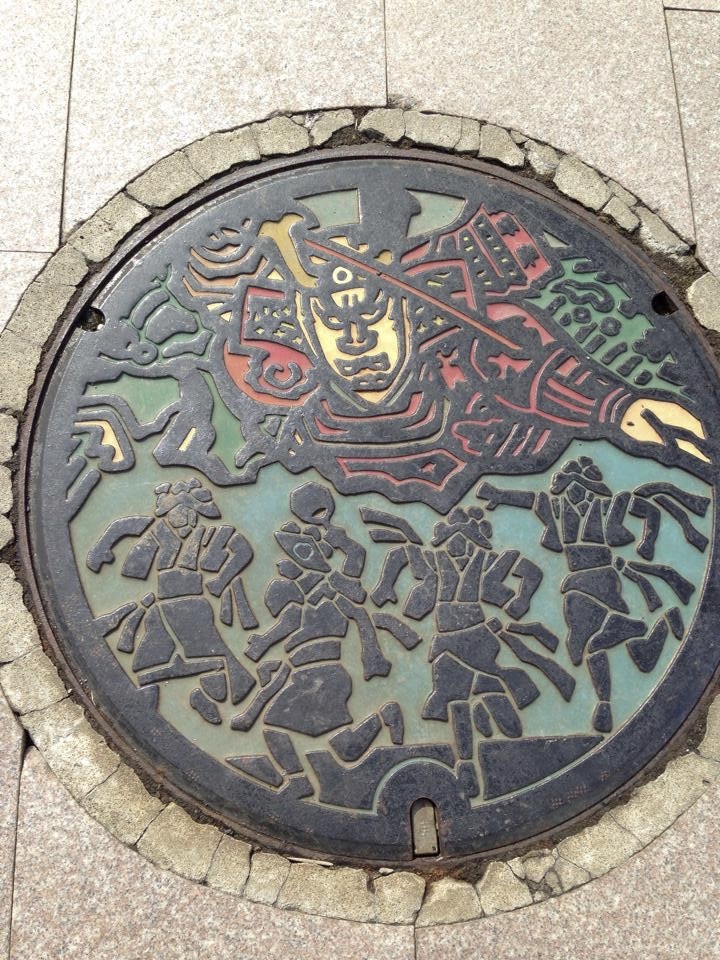Saiki City (佐伯市) is a small town with about 66,766 inhabitants (2020), located on the eastern coast of Ōita Prefecture.
The city was a jōka-machi, or castle town in the Edo Period (1603~1868), the first half of which experienced a sudden rise in urban centers built around the castles of the Daimyō, or vassals of the Shōgun. Numbering between 200 and 250 for most of this period, the Daimyō were allowed by the shogunate (幕府, bakufu) to erect one castle in their feudal domain (藩, han). Because of this castles were (but not always) torn down throughout the domain and the samurai class in each han moved to neighborhoods near the castle. Many of these neighborhoods with their old samurai residences, called buke yashiki (武家屋敷), can still be found fairly well-preserved in smaller Japanese towns today.
Saiki's manhole cover also features the gate of the former castle. Like many Japanese castles it was torn down (abandoned?) in 1871 in an effort to destroy the vestiges of the old feudal system. (Mottainai! Such a waste!)
The writing on the manhole says Saiki no haru mazu Shiroyama ni kitari doppo (佐伯の春まず城山に来たり独歩) or roughly translated "Saiki's spring first comes to Shiroyama and walks alone." (Shiroyama is the hill upon which the castle was located.) The sentence comes from the novel Bungo no Kuni, Saiki (豊後の国佐伯).



